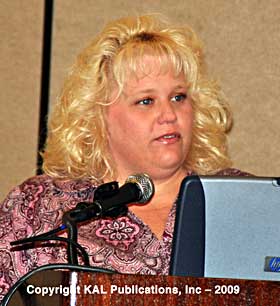There are two different variance issues. One is related to compatibility. UL says yes, biodiesel is compatible with USTs through B5. That does not carry over to leak detection equipment.
There are two variances you can get to store biodiesel. Blends greater than B5 through B20 must be stored in a double-walled UST and components. It does not mean a lined tank or a pipe in a trench. It has to be a true double-walled component. It must be approved for the use of petroleum diesel. It must comply with all other applicable operational requirements. If you do this, you can go to your local CUPA and submit a notice of intent to store biodiesel. You can modify your state form B and you must submit a letter from your equipment manufacturer saying that your UST and all its components are compatible. I've been collecting letters from manufacturers and posting them on our website. If a letter has already been posted, you can use that letter. Xerxes, STI and Containment Solutions have already identified their tanks that are compatible with biodiesel. We've also received letters from the nine top piping manufacturers.

If UL comes out and makes a statement saying B20 is the same as B5, you don't need a variance any more. If UL announces there are compatibility issues, then it's a completely different situation.
The important thing is getting UL moving and UL is moving pretty slow.
Yes, the blends up to B20 — for most equipment — is not going to be a problem.
We are at the mercy of the manufacturers of leak detection equipment to get their letters that their equipment functions with the biodiesel blend stored. They're involved in legal reviews and it's taking much longer than we anticipated.
Variances for biodiesel are valid for 36 months from the effective date of the section.
You may have to switch your leak detection equipment to find one that is compatible with biodiesel.
After this 36 months, it's going to depend where we are with UL, where manufacturers are getting their equipment in for testing. You will have to remove your equipment if they are not certified for use with biodiesel. You might have components where the manufacturer is out of business or they don't make that model any more, they're not going to spend the money to test their products. Only the newest of the newest will be tested. It's a business decision for them: do they want to spend the money to get the testing to certify a piece of equipment only being used by 30 people?
You will have issues with local and state fire marshals. I can only get biodiesel to the shear valve. After that, it's someone else's jurisdiction.
I can guarantee you there will be changes to the regulations. The requirements you meet today will not be the same. They may change in six months. There may be other things you are required to do instead. That's part of the problem with emergency regulations. Once we're in the formal regulation process, the public will give their input and things will change.
Can biodiesel be stored in ASTs? That's a Cal EPA question and it involves SPCC plans.
There may be a CUPA who charges for a change in operating permits. They may charge you by the hour. They may decide to not charge you. It's all over the board.
Trade magazine publishing featuring a “hometown paper” approach to industry news, events, and the people who make it all happen.